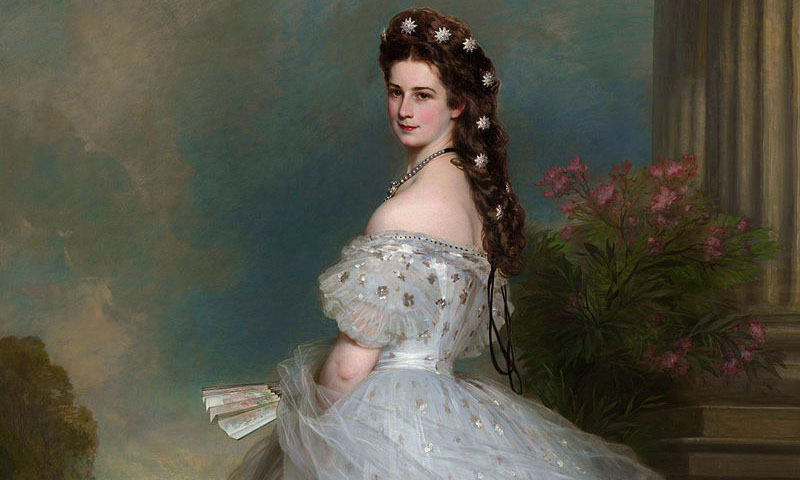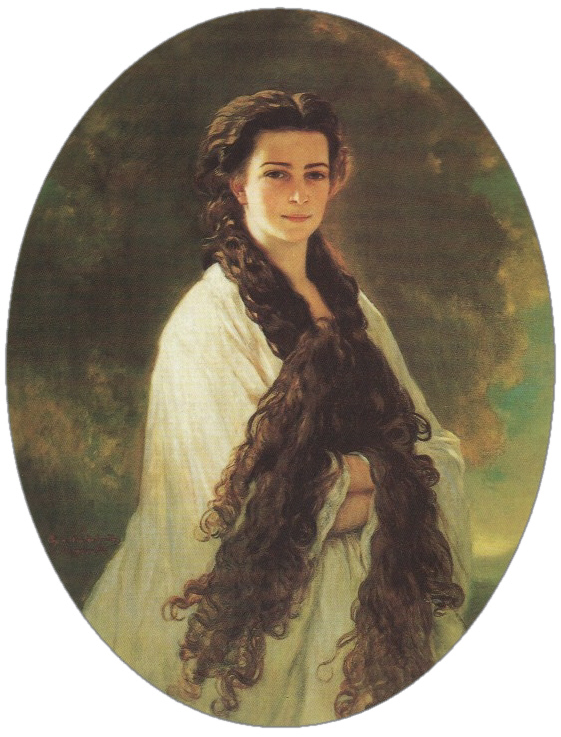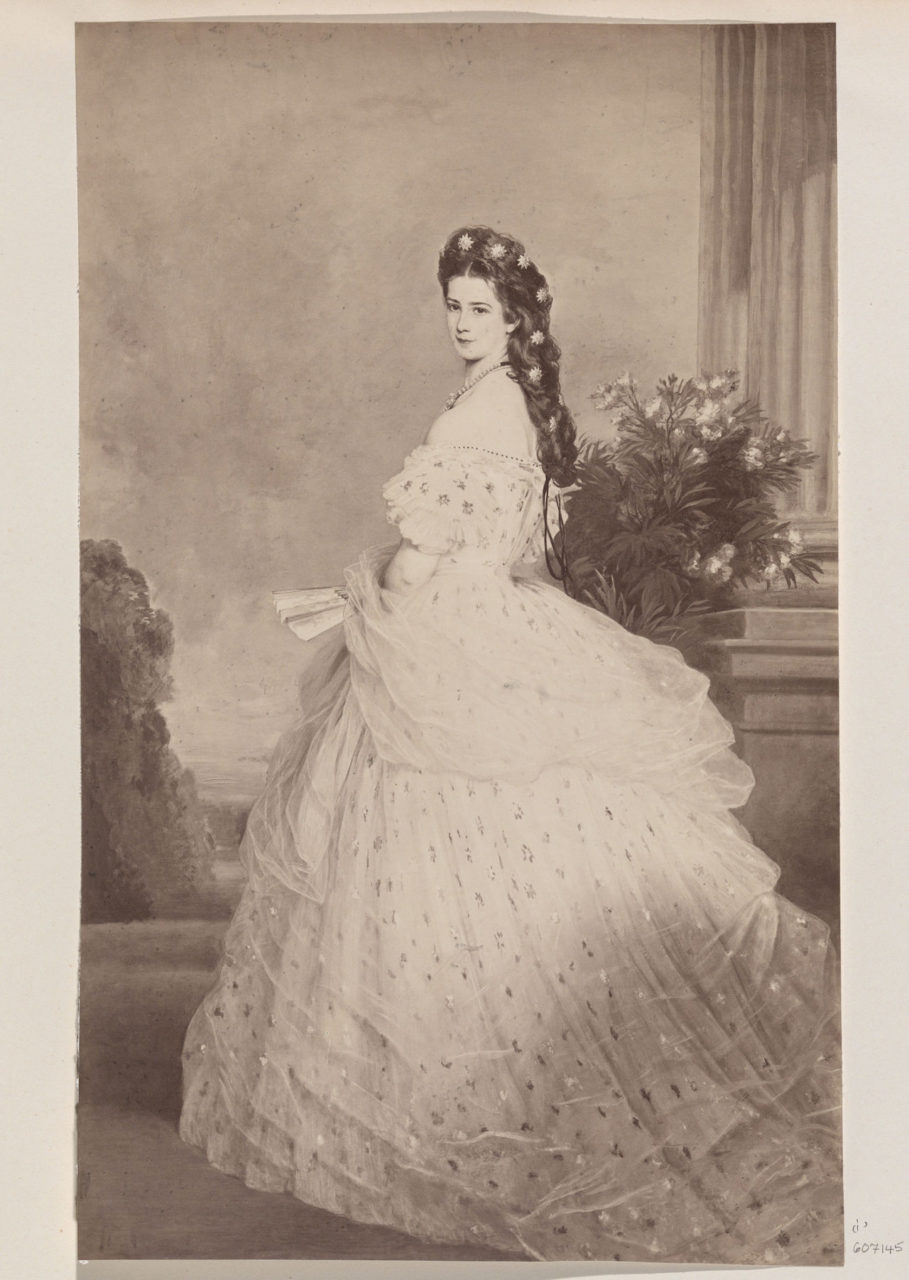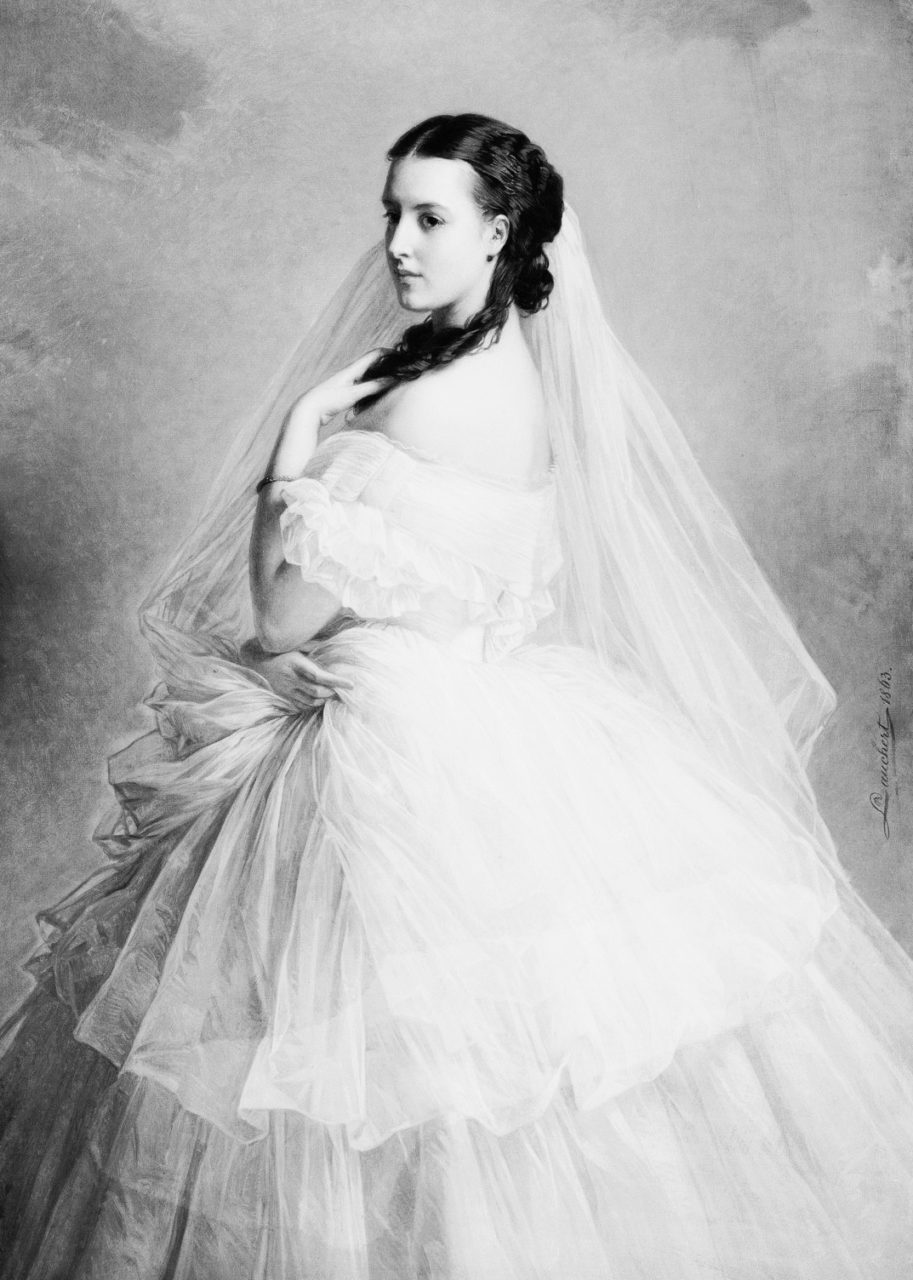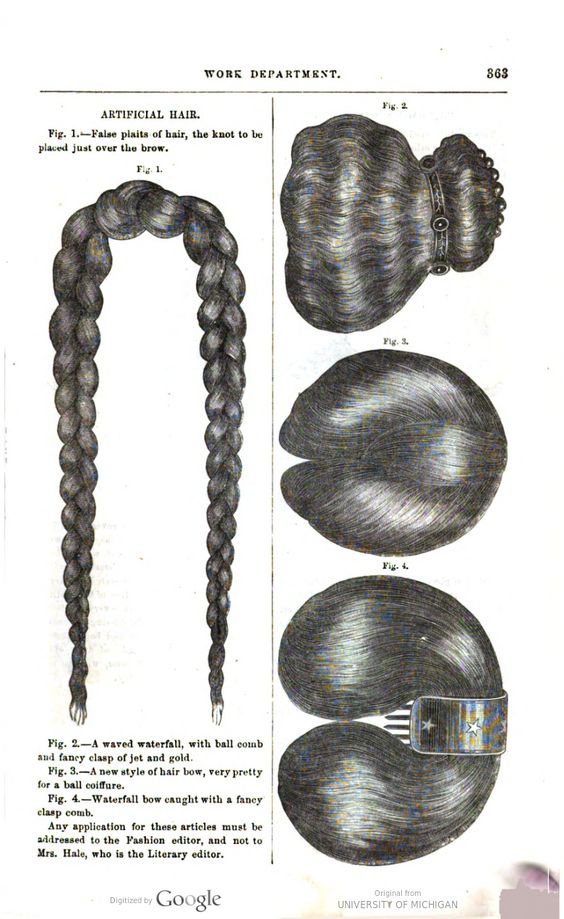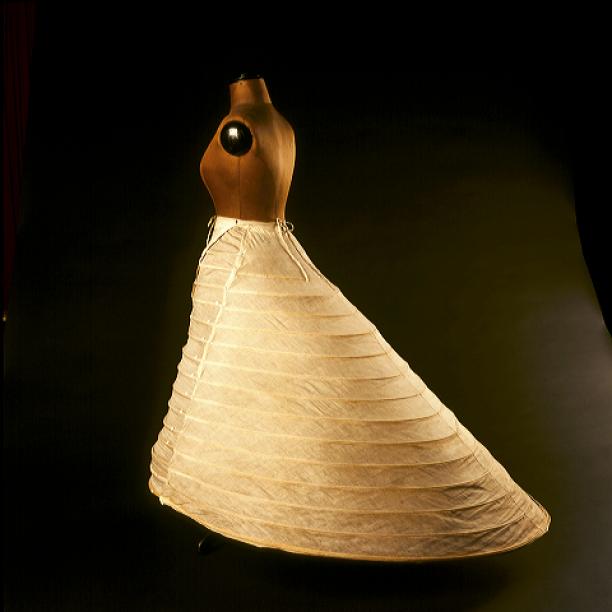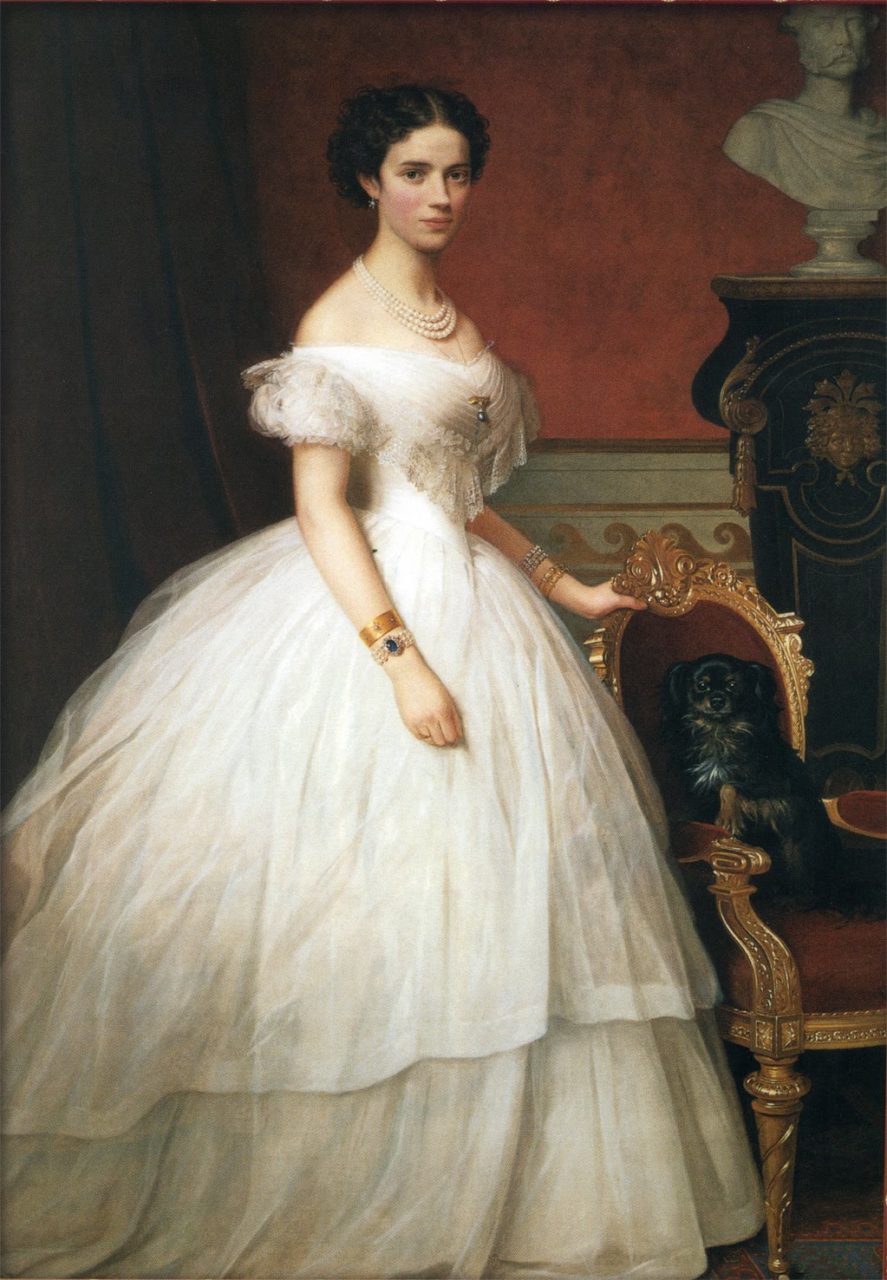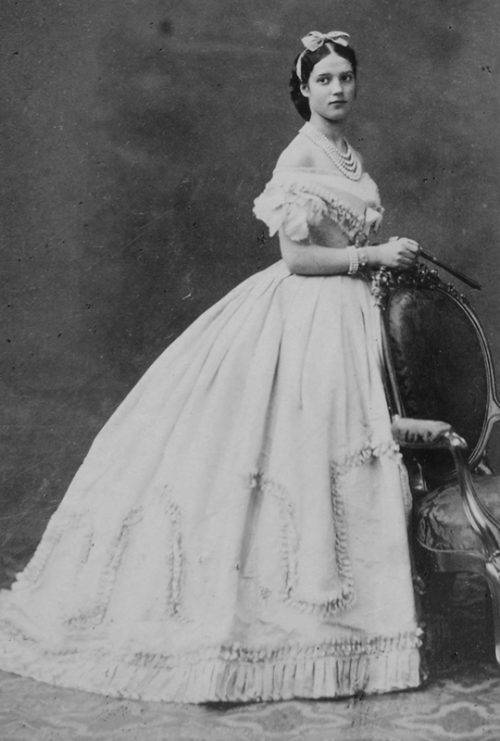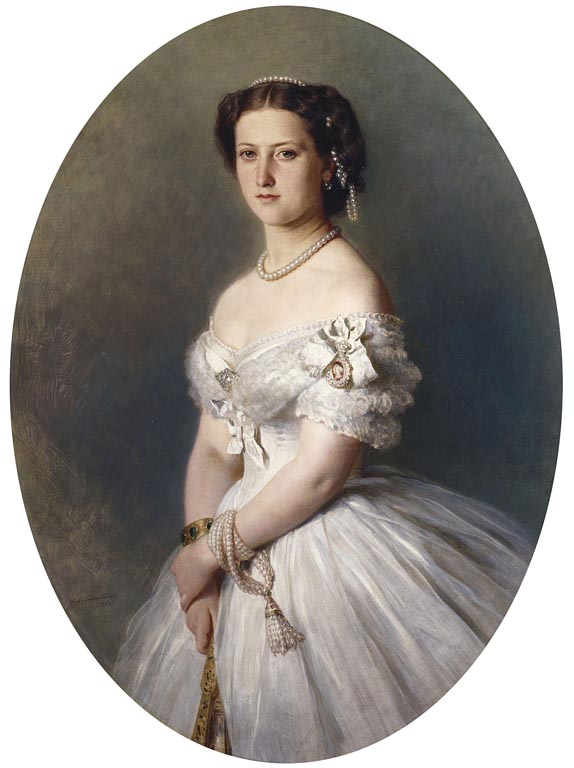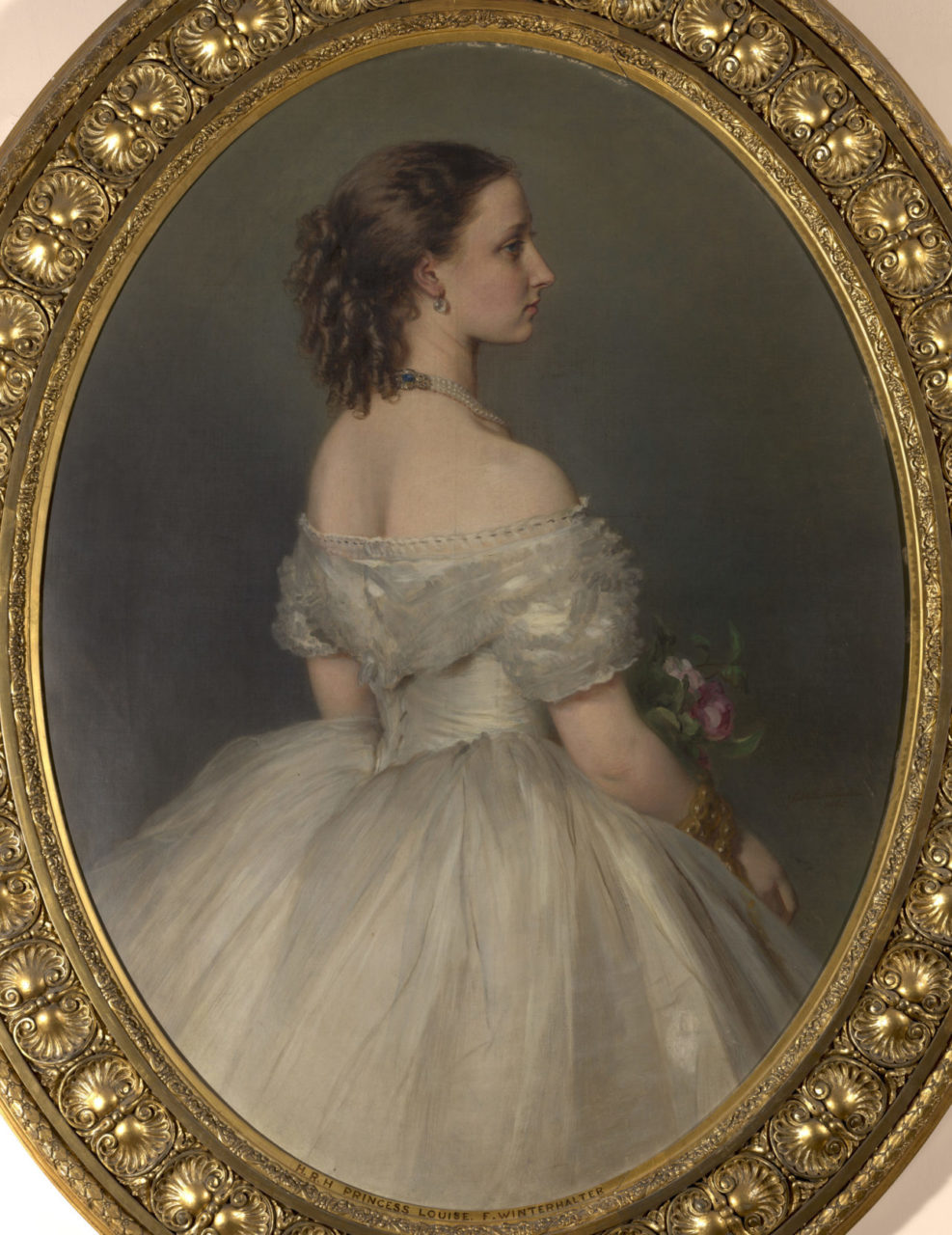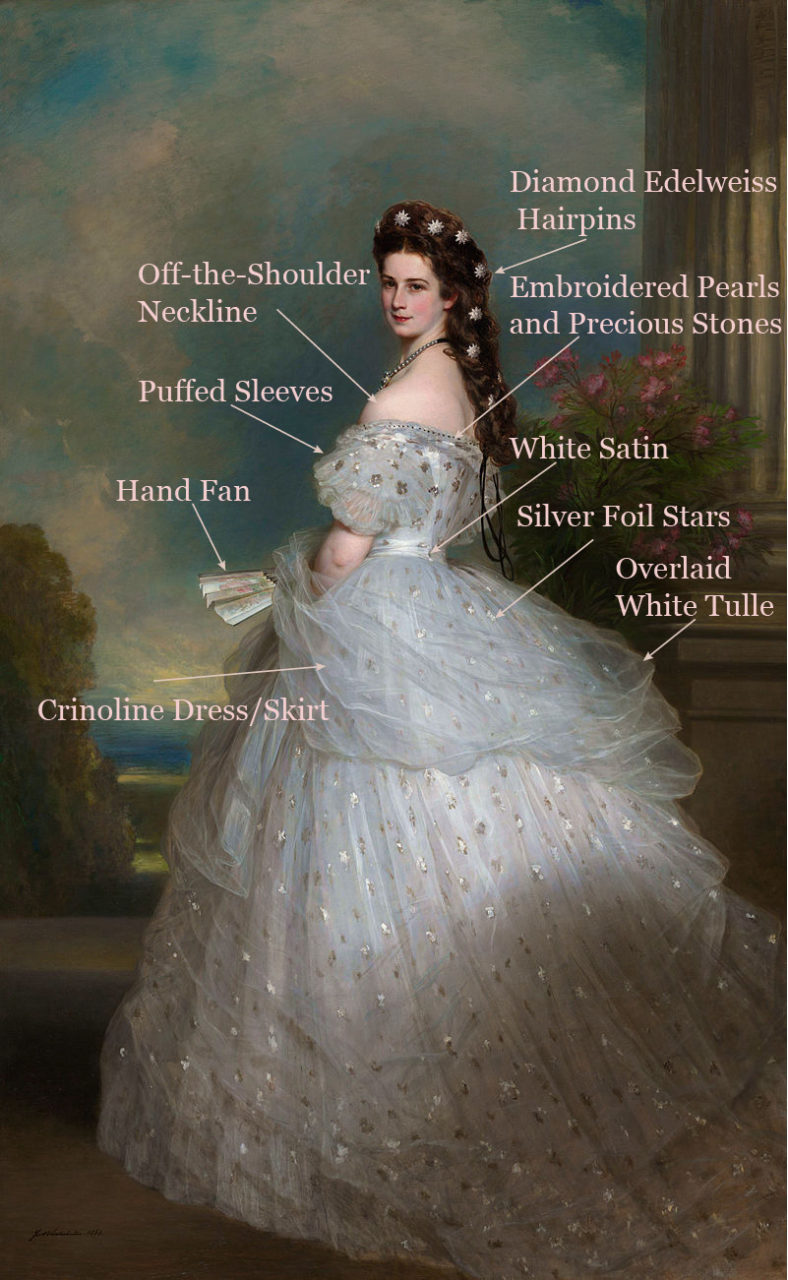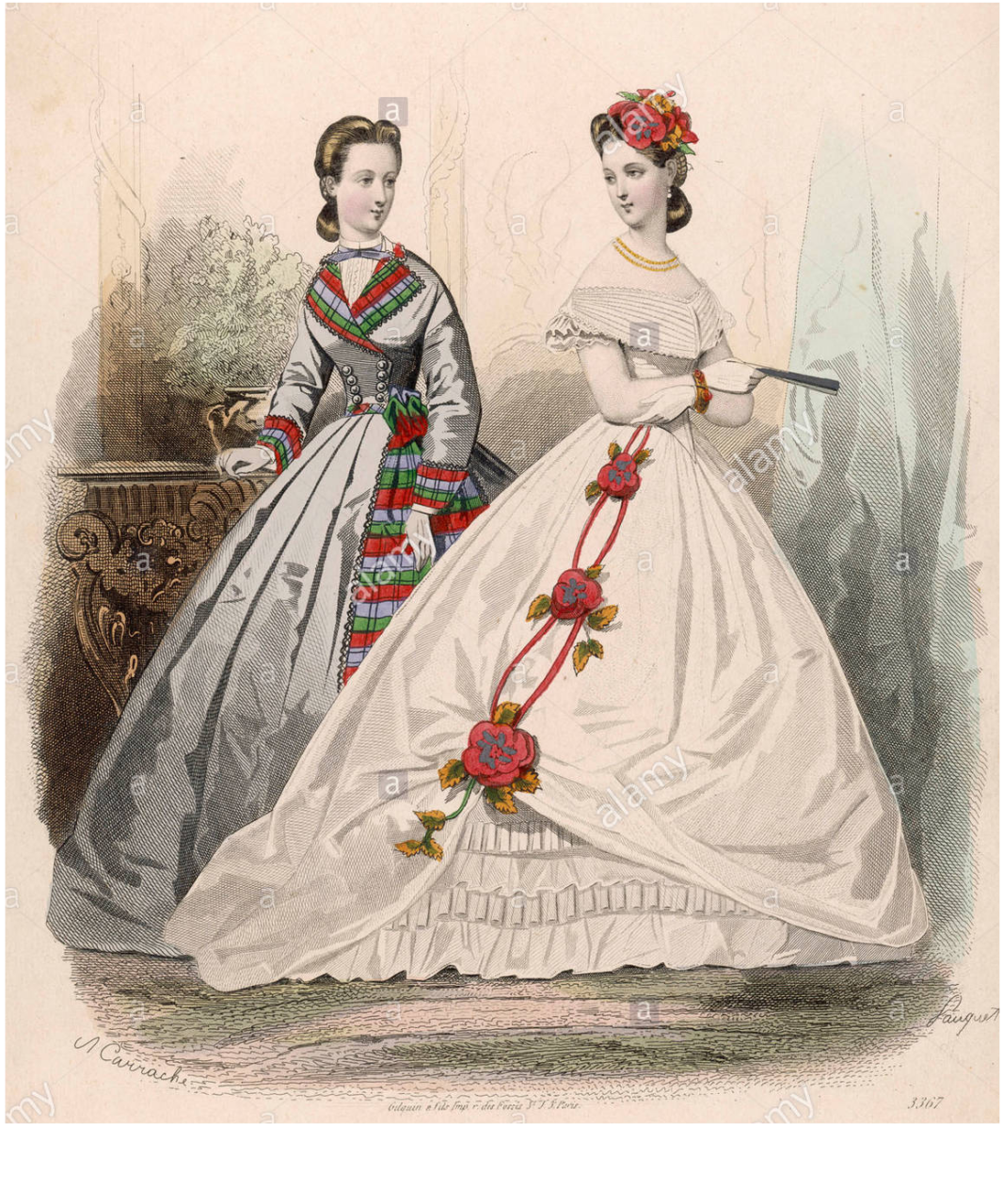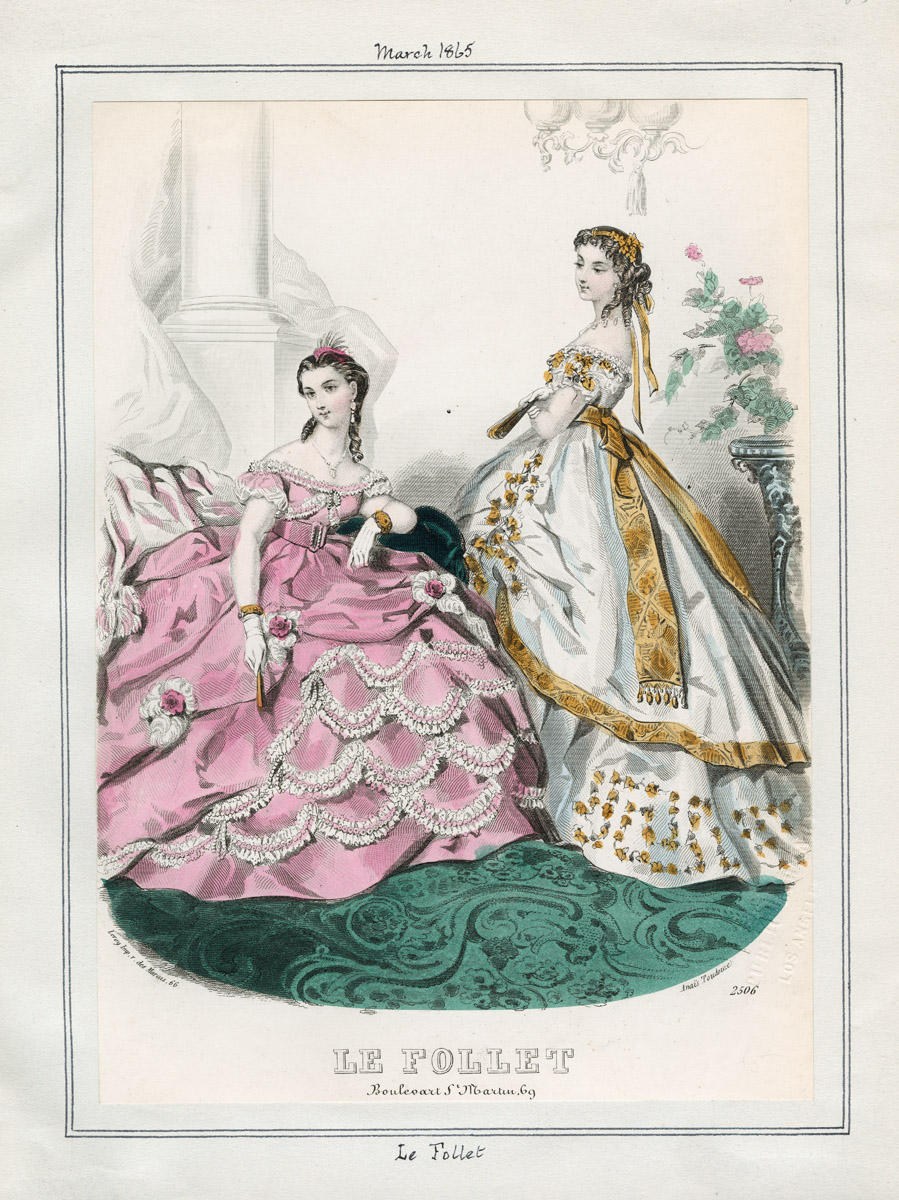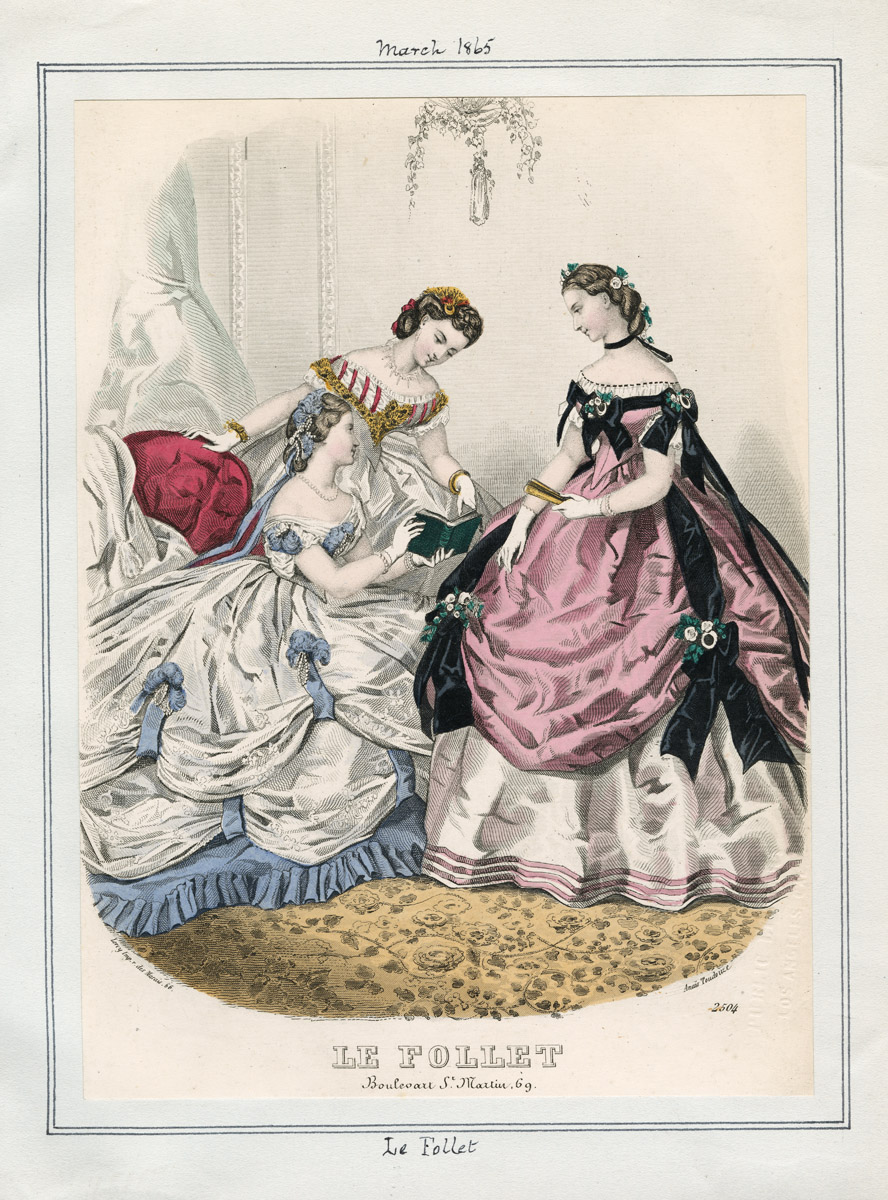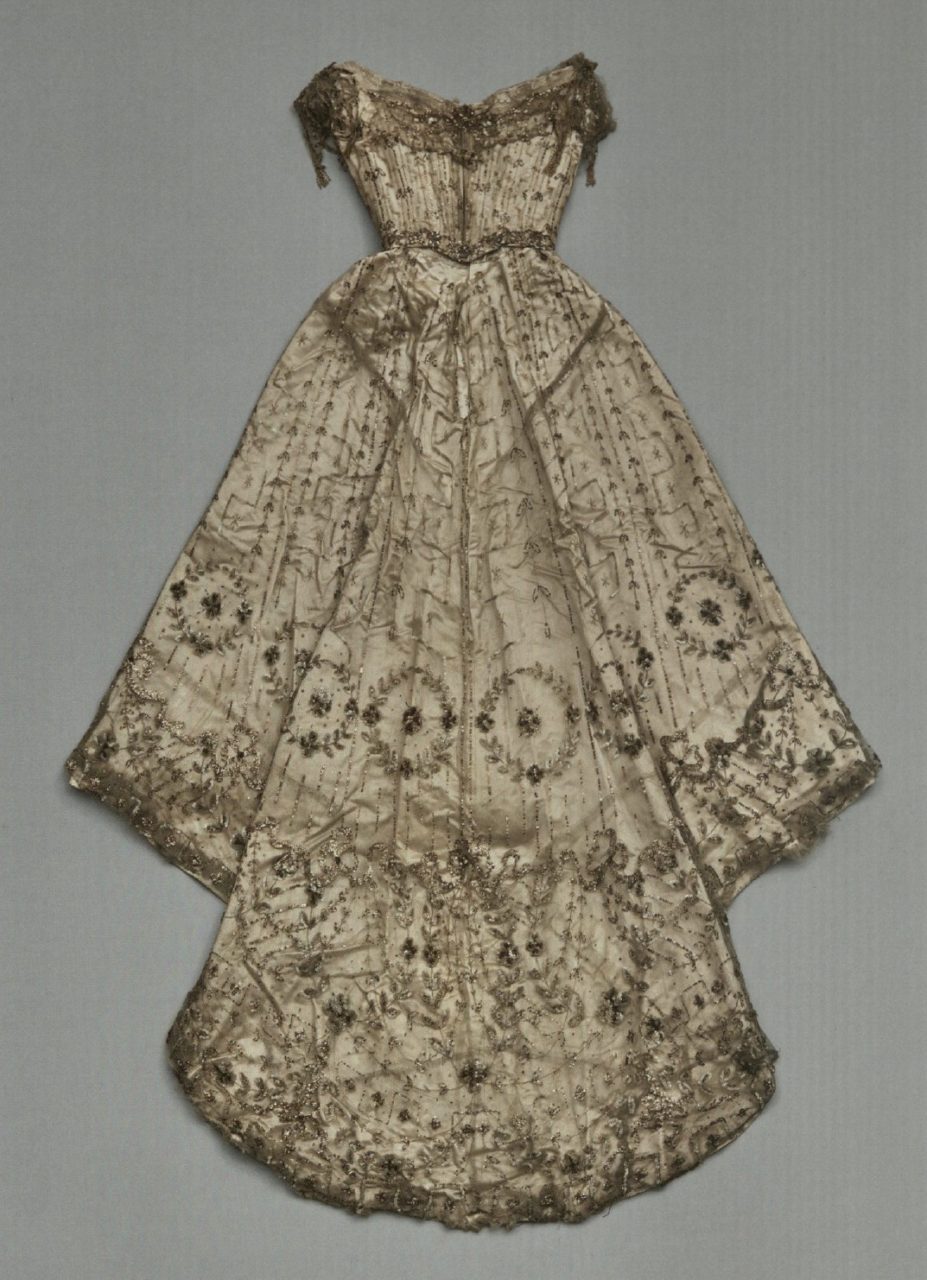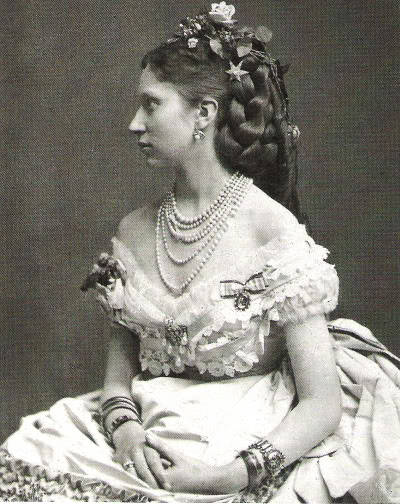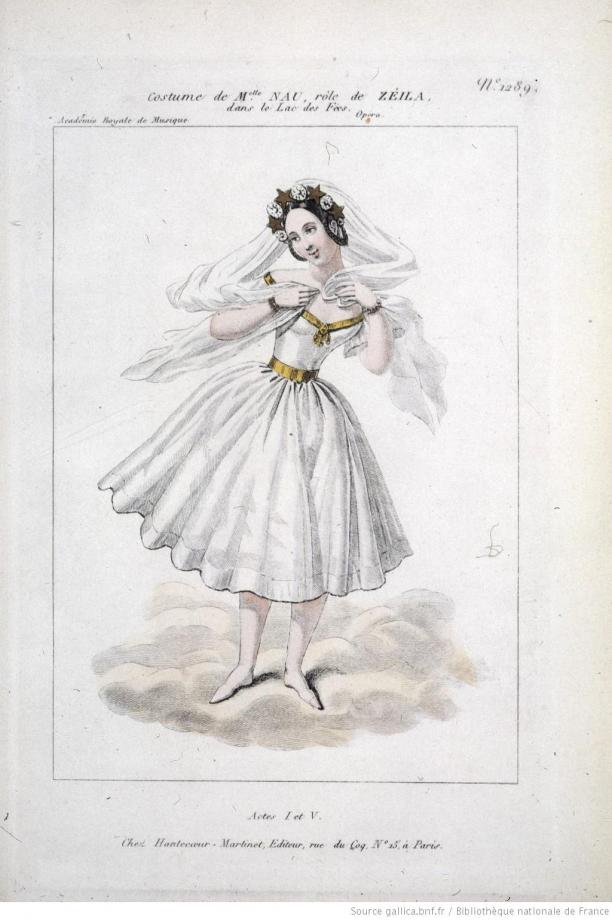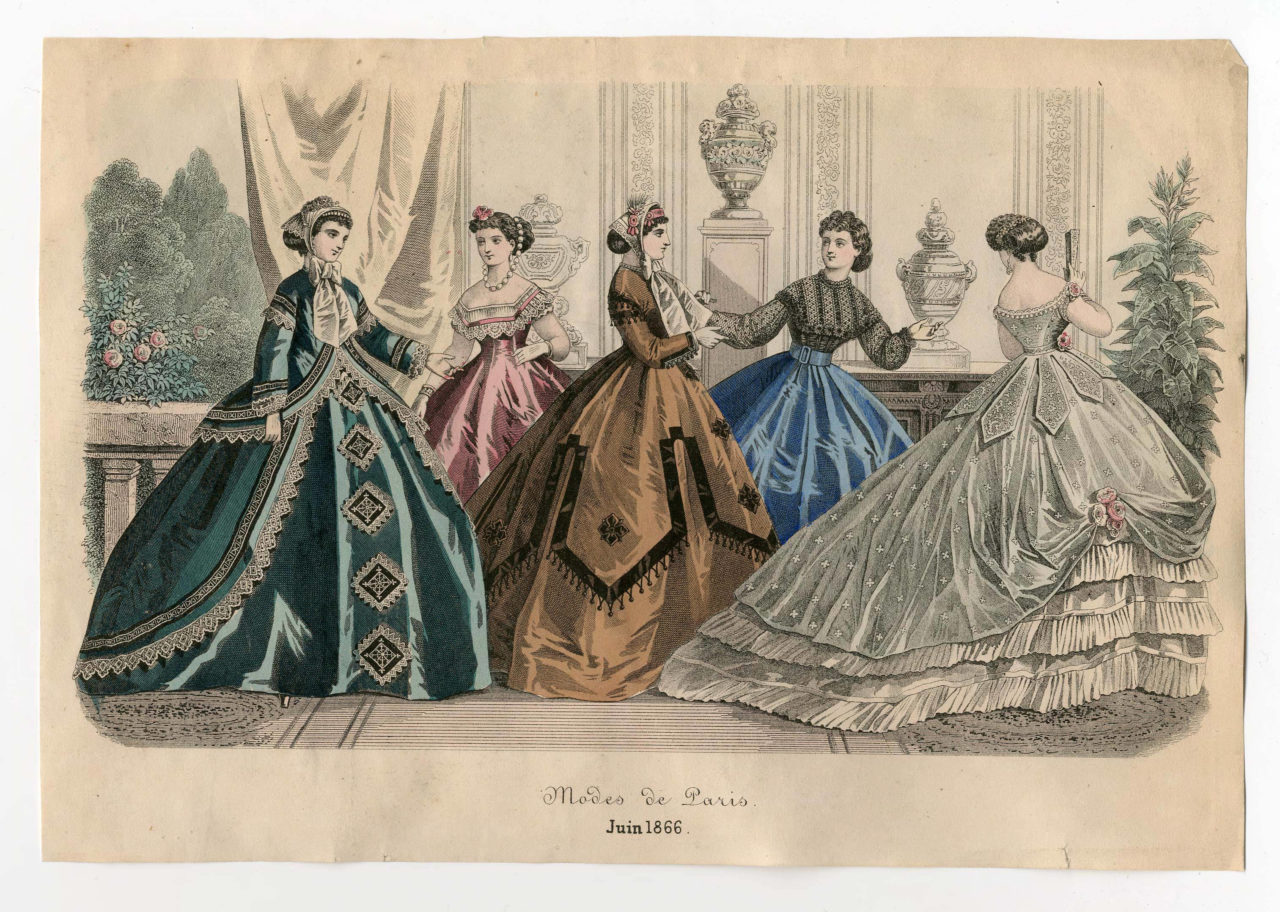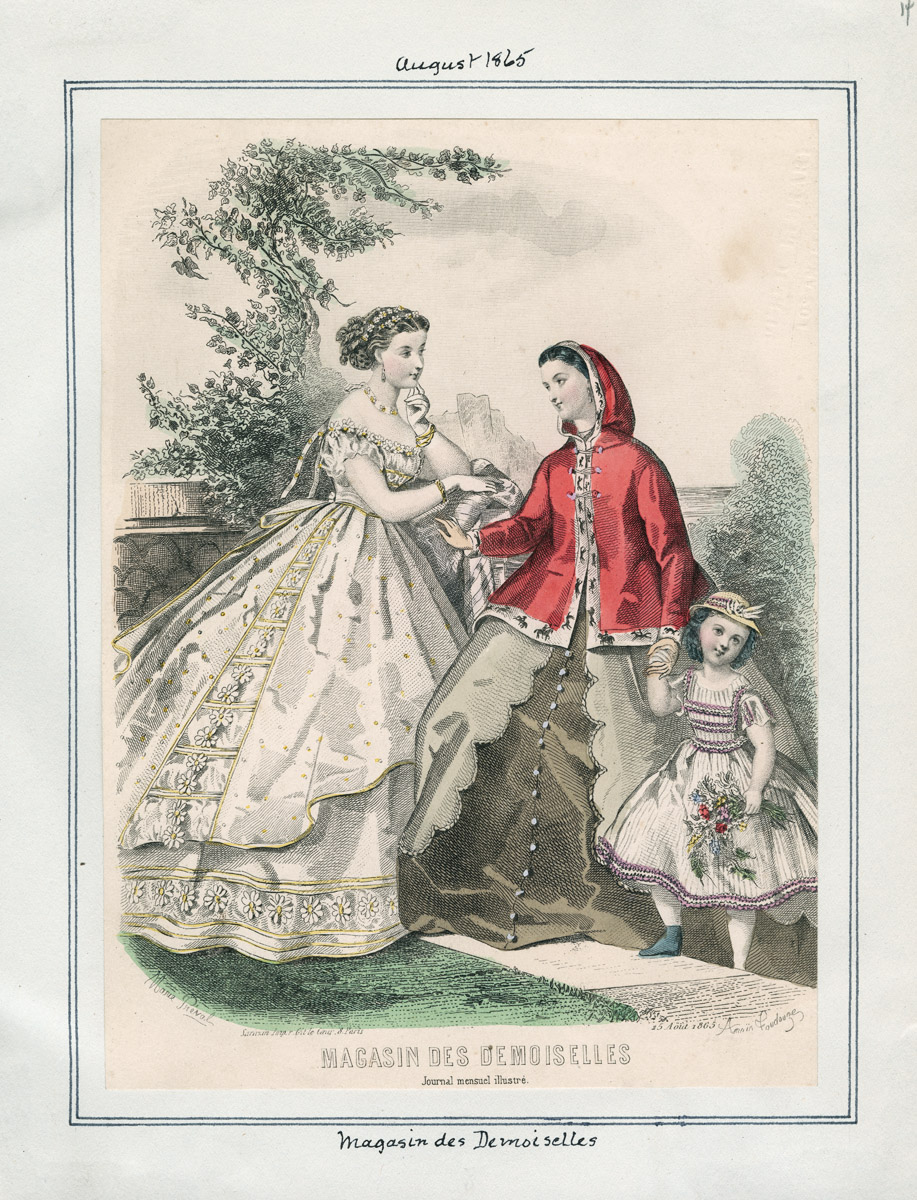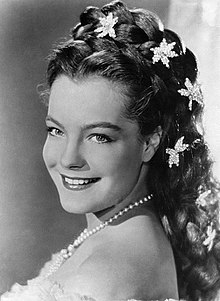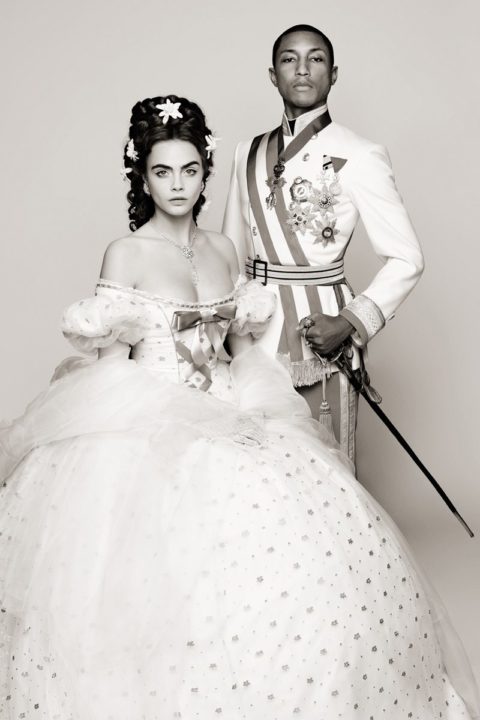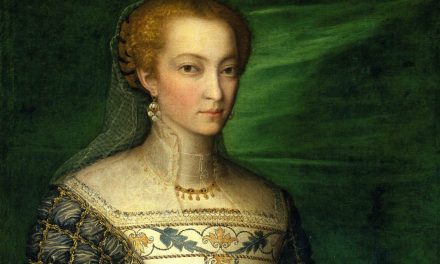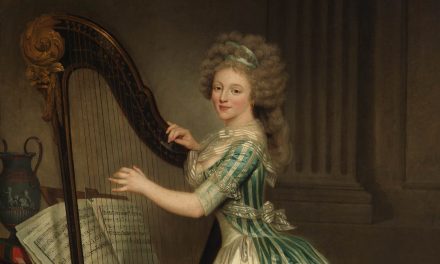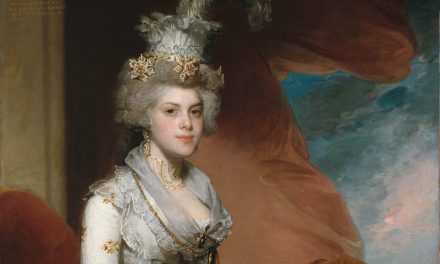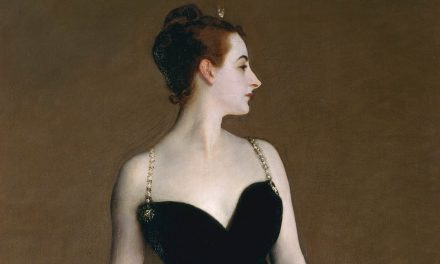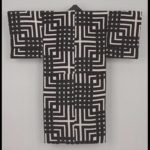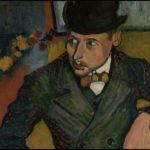In Winterhalter’s 1865 portrait, Empress Elizabeth of Austria (known as Sissi) wears a white satin evening dress covered with thousands of silver foil stars shimmering under the layer of tulle. The dress, thought to be designed by Worth, follows fashionable trends of the era, but also has singular touches, like the stars, befitting her status as Empress.
About the Portrait
Franz Xaver Winterhalter painted the portrait of Empress Elisabeth of Austria, in 1865 (Kessler-Aurisch 214). He was a German artist born in 1805 in Menzenschwand, Germany (Britannica). He was part of several movements, such as Rococo, Neoclassicism and Romanticism (Wikipedia). He painted Sissi’s portrait at the end of his career; he died eight years later, and only completed a few portraits after Sissi’s (Wikiart). Winterhalter was known for his famous depiction of the royal and imperial aristocracy (Kessler-Aurisch 214). However, Empress Elisabeth was considered to be the grandest of all of his imperial sitters (Kessler-Aurisch 214). She was 28 years old at the time the portrait was completed.
The portrait was commissioned by her husband, the Emperor Franz Joseph I of Austria (Burlion 36). Empress Sissi did sit for the painter (Kessler 214). There are photographs that remain from the year the portrait was completed, such as figure 3, which could suggest that photographs of the portrait might have been distributed. The portrait shows Winterhalter’s freer brushwork, which was influenced by his adoption of the Romantic style (Britannica). Winterhalter painted the Empress four times (Burlion 36). The most famous work is the current work of the Empress with her hair tied up, studded with silver stars (Burlion 36). During the same time he completed this portrait, he painted two private portraits of the Empress meant for her husband, Franz Joseph I, which he hung in his study (Cone 142). In both portraits (Figs. 1 & 2), which are rather informal, she has her luscious hair loose and is wearing a peignoir. Although she was admired more generally for her beauty, she was particularly known for her thick and long hair, which went all the way down to her feet.
Fig. 1 - Franz Xaver Winterhalter (German, 1805-1863). Empress Elisabeth of Austria, 1864. Oil on canvas; 122 x 100 cm (48 x 39 3/8 in). Regensburg: Collection of the Prince of Thurn and Taxis. Source: Wikipedia
Fig. 2 - Franz Xaver Winterhalter (German, 1805-1873). Empress Elisabeth of Austria, 1865. Oil on canvas; 158 x 117 cm (62.25 x 46 in). Vienna: Kunsthistorishes Museum, GG9142. Source: Pinterest
Fig. 3 - Franz Xaver Winterhalter (German, 1805-1873). Elisabeth, Empress of Austria, 1865. Carbon print; 39.8 x 24.5 cm. London: Royal Collection Trust, RCIN 607145. Source: Royal Collection Trust
Franz Xaver Winterhalter (German, 1805–1873). Empress Elisabeth of Austria, 1865. Oil on canvas; 255 x 133 cm. Vienna: The Hofburg. Source: Wikiart
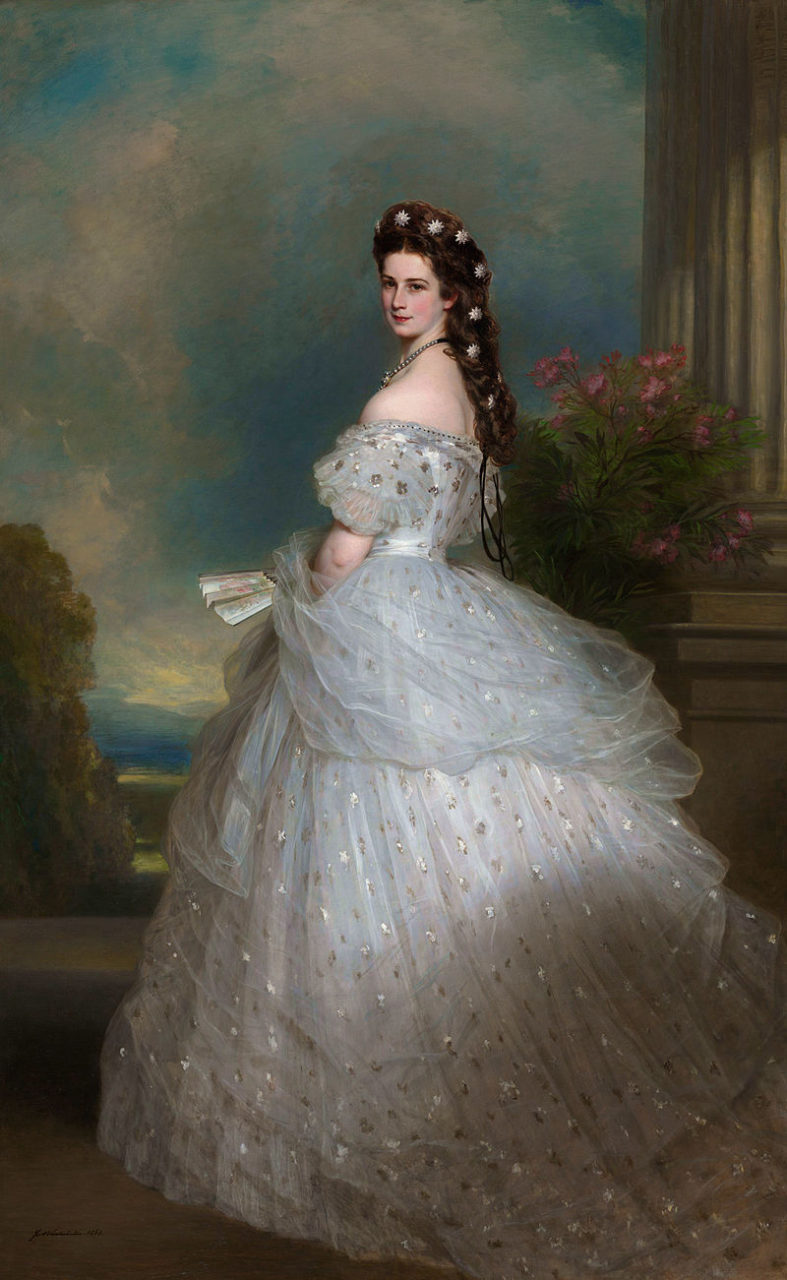
About the Fashion
In this portrait, Sissi is wearing an evening ball gown, believed to be created by Charles Frederick Worth (Kessler-Aurisch 214), the most renowned dressmaker of the later half of the 19th century. Princess Alexandra’s portrait (Fig. 4) completed in 1863, looks almost identical to Sissi’s, from the pose to the materials used for the dress. Worth dressed all the wealthy American and European royalty and aristocrats, and was known for his use of lavish fabrics and trimmings (Starcky 62). Sissi’s dress was made of white satin and tulle. Her dress is covered with thousand of silver foil stars shimmering throughout her dress, under the layer of tulle. Her gown is also embroidered with precious stones and pearls. She is wearing a low off-the-shoulder neckline and tight bodice, which Les Modes Parisiennes said in their May 6, 1865 fashion column were often worn with tulle materials (201).
Sissi’s head is crowned with her large braids, creating a natural diadem, which is decorated with diamond edelweiss pins. The edelweiss was the emblematic flower of the Austrian alps. In May 20, 1865, Les Modes Parisiennes, said in their fashion column, that any kind of field flowers or white lilies were extremely popular hairclips (Figs. 12 and 13) and were used to style the hair (228). Sissi’s crown of hair was imitated more often than any other aspect of her appearance (Cone 148). The empress even referred to it as her “trademark coiffure” (Cone 145). Godey’s magazine even referred to the “Empress” headdress in their April Fashions, which was made with a full front spray of white Persian lilacs, surrounded by blue forget-me-nots (384). It’s possible the name given to the novel headdress was in reference to Empress Sissi’s hairstyles. Since very few women in Europe had so much hair, they had to rely on hairpieces to imitate the empresses hairstyles, which can be seen in figure 5.
In 1865 the crinoline skirt was still very much in fashion, however it had started to flatten in the front. Sissi is wearing a double crinoline skirt (Fig. 6), which was especially worn with ball gowns, which the Journal des demoiselles suggested in their fashion column (27). Plunging necklines, with sloping shoulders and puffed sleeves were worn in the evening, as can be in seen in figures 4, 7, 9, 10, whereas high necklines were worn during the day (Kessler 244). In her hands Sissi is holding a fan, which in 1865 had become an indispensable fashion accessory for middle and upper class women.
One very popular trend in 1865 was to match. Matching one’s dress ornaments to one’s hairstyle decorations was very fashionable (Figs. 11-13), both the Journal des demoiselles (27) and La Mode illustrée (214) mentioned this trend in their fashion columns. In 1865 artificial dyes had already been invented and were in use; a popular color was blue, however there was still a preference for white dresses. Journal des demoiselles wrote in 1865 that, “Nothing is prettier and more elegant than white” (27). You can see that the majority of the nobility at the time wore white evening gowns (Figs. 4, 7-10). Sissi’s dress was in this case definitely conforming to the fashion of the time–her dress was white–and the Edelweiss stars on her dress matched the beautiful Edelweiss star pins in her hair. There also seemed to have been a preference for lighter fabrics in dresses, such as muslin, tulle (Figs. 4, 7, 9, 10, 14), and gauze, which was mentioned in Le Moniteur de la mode‘s July 1865 fashion column (217).
Fig. 4 - Richard Lauchert (German, 1823-1869). Princess Alexandra, 1863. Oil on canvas. Source: Pinterest
Fig. 5 - Artist unknown. Artificial Hair, 1865. Source: Pinterest
Fig. 6 - Designer unknown. Double Crinoline, 1865. Amsterdam: Amsterdam Museum, KA 1131. Source: Mode Muze
Fig. 7 - Artist unknown. Princess Dagmar of Denmark, 1860s. Source: Wikipedia
Fig. 8 - Artist unknown. Empress Maria Feodorovna, 1865. Source: Pinterest
Fig. 9 - Franz Xaver Winterhalter (German, 1805-1873). Princess Helena, 1865. Oil on canvas; 116.4 x 86 cm. London: Royal Collection Trust, RCIN 405032. Source: Royal Collection Trust
Fig. 10 - Franz Xaver Winterhalter (German, 2805-1873). Princess Louise, 1865. Oil on canvas; 116 x 86 cm. London: Royal Collection Trust, RCIN 404581. Source: Royal Collection Trust
In the 1860s, women were expected to not only be exemplary mothers, but also to have a great fashion sense. Through their fashion, women became the ‘mirror’ of their husbands (Starcky 54). Since men’s clothing was very minimally ornamented and most men of higher status wore uniforms, it was harder to differentiate them, therefore it became the woman’s role to show her husband’s social position through her extravagant dresses. The more embellishments and jewelry she wore suggested the higher social status they had (Figs. 7-9, 14). This seems to be something Worth took into consideration when he was designing the empress’s dress. Her diamond stars and additional jewelry were probably added to suggest her rank and importance in society.
Fig. 11 - Artist unknown. Tartan Trim dress, 1865. Source: Alamy
Fig. 12 - Artist unknown. Le Follet, March 1865. Source: Los Angeles Public Library
Fig. 13 - Artist unknown. Le Follet, March 1865. Source: Los Angeles Public Library
Because Sissi was the Empress of Austria, which was the third most populous empire following France and the Russian Empire, she was considered part of the utmost nobility and royalty. This is probably why there are very few fashion plates that match her one-of-a-kind dress. Fashion journals often depicted the general fashion of the time and suggested and talked about fashion trends that the majority of women could be adopt. The dresses that do share similarities to Sissi’s dress are found amongst other royalty members, such as queens and princesses (Figs. 7-10).
Figure 14 shows an evening gown that was owned by a princess from the house of Auersperg. The princesses were part of Sissi’s intimate circle, which could mean that this gown was inspired by the gowns Sissi wore during that time. Sissi was considered a fashion trendsetter, like Empress Eugénie. In The Imperial Style, the authors recount that “when Winterhalter showed sketches of Empress Elisabeth to Empress Eugénie, she reacted by calling Elisabeth, who was twelve years her junior, the most beautiful crowned head in Europe, an honor that had been Eugénie’s until then” (142). The dress in figure 14 shares similarities to Empress Sissi’s gown and suggests what Sissi’s dress might of looked like. It has silver and metallic spangles covering the dress, a plunging neckline and puffed sleeves, which are similar to Sissi’s gown. The dress is also made of white silk satin and has an overlaid tulle layer.
As for future influences, several examples suggest an influence the portrait might of had on the public and women’s fashion. For instance in figure 15, there is an almost identical hairclip to the ones Sissi wore. Figure 16 is a fashion plate from 1865 showing a costume worn by Maria Delorès Nau, who played the role of a young fairy named Zéila in Daniel Auber’s grand opera The Fairy Lake. The headdress worn by the actress shares similarities to the pins worn by Empress Elisabeth. In figures 17 and 18 the dresses share a similar feel to the gown worn by Sissi. The added flowers and small dots on the dresses, almost look like the stars covering Sissi’s gown.
Fig. 14 - Designer unknown. Evening Gown once owned by a Princess Auersperg, ca. 1865. White silk satin, white tulle, decorated with white sequins and gold spangles. Vienna: Kunsthistorishes Museum, MD N 484. Donated by Prince Karl Adolf von Auersperg. Source: High Society The Portraits of Franz Xaver Winterhalter
Fig. 15 - Artist unknown. Princess Lovisa Josefina Eugenia of Sweden, 1868. Photograph. Source: The First Waltz
Fig. 16 - Artist unknown. Costume, 1865. Paris: La Bibliothèque Nationale de France. Source: Mode Muze
Fig. 17 - Artist unknown. Modes de Paris, 1866. New York: The Metropolitan Museum of Art, b17509853. Gift of Woodman Thompson. Source: The Metropolitan Museum of Art
Fig. 18 - Artist unknown. Magasin des demoiselles, August 1865. Los Angeles: Los Angeles Public Library, rbc5315. Source: Los Angeles Public Library
Its Legacy
Sissi’s legacy has lived on in books, films, and through memorials to her all throughout Austria. She is often remembered for her incredible beauty. In 1955 the first of three movies called Sissi was released, starring Romy Schneider as Sissi (Fig. 1). These movies saw an instant recognition and success, and are today still beloved in Austria and all throughout the world. Those movies also made Romy Schneider an instant star.
In 2014, the annual Chanel Métiers d’Art collection was showcased in Salzburg. Designer Karl Lagerfeld made a short film featuring Cara Delevigne and Pharrell Williams as the imperial couple. Cara was wearing Sissi’s infamous white gown with stars in her hair and Pharrell was dressed as the emperor (Fig. 2).
Today, her name is often synonymous for glamour and designers will mention her whenever they want to evoke opulence.
Fig. 1 - Photographer unknown. Schneider as Elisabeth of Austria in Sissi, 1955. Source: Wikipedia
Fig. 2 - Karl Lagerfeld. Cara Delevigne and Pharrell Williams, 2014. Photograph. Source: Fashion Magazine
References:
- “Austrian Empire.” Wikipedia, May 2, 2018. https://en.wikipedia.org/w/index.php?title=Austrian_Empire&oldid=839336858.
- Burlion, Emmanuel. Franz Xaver Winterhalter, 1805-1873. Brest: Burlion, 2011. http://www.worldcat.org/oclc/756377106.
- Cone, Polly. The Imperial Style: Fashions of the Hapsburg Era: Based on the Exhibition, Fashions of the Hapsberg Era, Austria-Hungary, at the Metropolitan Museum of Art, December 1979-Ausust 1980. New York: The Metropolitan Museum of Art, 1980. http://www.worldcat.org/oclc/263704910.
- “Empress Elisabeth of Austria.” Wikipedia, April 27, 2018. https://en.wikipedia.org/w/index.php?title=Empress_Elisabeth_of_Austria&oldid=838547349.
- Faircloth, Kelly. “The Most Miserable Princess Ever: Sisi, Empress Elisabeth of Austria.” Jezebel. Accessed May 6, 2018. https://jezebel.com/the-most-miserable-princess-ever-sisi-empress-elisab-1671950113.
- “Franz Xaver Winterhalter.” Wikipedia, May 14, 2018. https://en.wikipedia.org/w/index.php?title=Franz_Xaver_Winterhalter&oldid=841252935.
- “Franz Xaver Winterhalter.” www.wikiart.org. Accessed May 16, 2018. https://www.wikiart.org/en/franz-xaver-winterhalter.
- “Franz Xaver Winterhalter | German Painter.” Encyclopedia Britannica. Accessed May 6, 2018. https://www.britannica.com/biography/Franz-Xaver-Winterhalter.
- Godey’s Lady’s Book and Magazine, 1865. http://hdl.handle.net/2027/mdp.39015004111103.
- Journal des demoiselles. Vol. 33, 1865. https://books.google.com/books?vid=HARVARD:HN73J7.
- Kessler-Aurisch, Helga, Laure Chabanne, Tilmann von Stockhausen, Mirja Straub, Eugene Barilo von Reisberg, Elizabeth Ann Coleman, Richard Ormond, and Donald W Dobler. High Society: The Portraits of Franz Xaver Winterhalter. Houston: Museum of Fine Arts, 2015. http://www.worldcat.org/oclc/954010767.
- Krick, Jessa. “Charles Frederick Worth (1825–1895) and the House of Worth.” The Met’s Heilbrunn Timeline of Art History, 2000. https://www.metmuseum.org/toah/hd/wrth/hd_wrth.htm.
- La Mode illustrée: journal de la famille, 1865. http://books.google.com/books?id=dswVkfsF9ggC.
- “Ladies and Their Fans – Victorian Days – Angelpig.Net.” Accessed May 6, 2018. http://www.angelpig.net/victorian/fanlanguage.html.
- Lange, Barbara. “Winterhalter, Franz Xaver.” Oxford Art Online. Grove Art Online. Accessed May 6, 2018. http://www.oxfordartonline.com/view/10.1093/gao/9781884446054.001.0001/oao-9781884446054-e-7000091866.
- Le Moniteur de la mode: journal du grand monde : modes, illustrations, patrons, littératures, beaux-arts, théatres., 1865. https://books.google.com/books?id=e8ZBAAAAcAAJ.
- Les Modes parisiennes. Vol. 2, 1865. https://books.google.com/books?id=ocRBAAAAcAAJ.
- Starcky, Emmanuel, Laure Chabanne, Eugene Barilo Von Reisberg, Andreas Dobler, and Armin Panter. Franz Xaver Winterhalter: (1805-1873) : portraits de cour, entre faste et élégance. Compiègne: Palais de Compiègne, 2016. http://www.worldcat.org/oclc/965932604.

